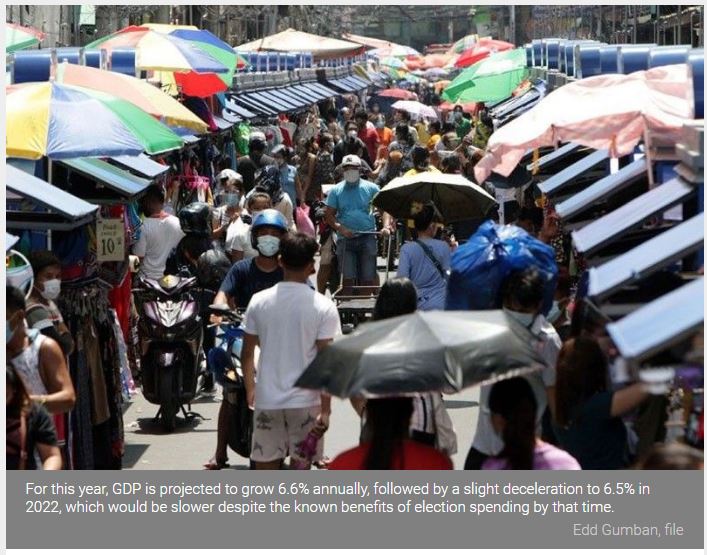Lockdown remnants to block Philippines recovery after deeper fall
MANILA, Philippines — The Philippine economy is likely to grow slower this year after nose-diving to a deeper fall last year, trailing its peers in Southeast Asia because of expected persistent lockdowns that are likely to prevent an economic rebirth.
Gross domestic product (GDP) likely slumped 9.6% year-on-year in 2020, worse than the 8.3% seen last October by the International Monetary Fund (IMF), Yongzheng Yang, the agency’s country representative, said in an email.
Worse, a weaker bounce-back is expected. For this year, GDP is projected to grow 6.6% annually, followed by a slight deceleration to 6.5% in 2022, which would be slower despite the known benefits of election spending by that time.
“The downward revision for 2020 mainly reflects the larger-than-expected year-on-year contraction in Q3 (third quarter),” Yang said on Tuesday. GDP slumped 11.5% in July-September period.
From there, Yang said a “gradual recovery process” should have taken place onward to this year where the continued existence of some form of lockdowns would still hamper recovery— and thus, explain IMF’s more pessimistic 2021 projection.
“This reflects a more gradual recovery process as social distancing and quarantine measures persist into 2021,” he pointed out.
Indeed, IMF’s forecasts for the Philippines generally pale in comparison with that of considered by the Duterte administration as guide in crafting policies. Pending the release of official 2020 GDP data on Thursday, the government only expected the economy to have contracted between 8.5-9.5% in 2020, growth between 6.5-7.5% this year, and an ambitious 8-10% growth for all of 2022.
The good news is that the rebound, if realized, would come from the usual prospects of infrastructure investment from the government, coupled with some private sector activity, Yang said. These, in turn, will be “supported by accommodative monetary policy and global recovery.”
Yet as pointed out by the IMF in its latest World Economic Outlook update released Tuesday evening, risks still prevail in much of the greater global economy. For instance, while the availability of vaccines is a positive sign, discrepancies on the schedule of vaccine rollout in emerging and developed economies are likely to shape economic performance.
For emerging markets like the Philippines, delays could hurt recovery, while differences on the “size of the policy response to combat the fallout” also matter. New infections triggering a surge in COVID-19 cases also cloud the outlook.
As it is, IMF said “the pandemic is expected to reverse the progress made in poverty reduction across the past two decades.”
“The strength of the recovery is projected to vary significantly across countries, depending on access to medical interventions, effectiveness of policy support, exposure to cross-country spillovers, and structural characteristics entering the crisis,” IMF said.
India leads the world
Location-wise, the so-called ASEAN-5 group— composed of the Indonesia, Malaysia, the Philippines, Thailand, and Vietnam— is seen collectively to have shrank 3.7% year-on-year in 2020. This means the Philippines likely underperformed its peers in the region last year.
Nonetheless, slower growth is expected at 5.2% in 2021 for the same bloc, down from 6.2% considered in October. For 2022, the region’s GDP would likely expand 6% year-on-year, better than 5.7% originally.
Outside the area, China would grow a strong 8.1% in 2021, followed by 5.6% in 2022. India is seen to be the world’s leader with 11.5% growth this year, and 6.8% in 2022.
“The baseline assumes broad vaccine availability in advanced economies and –10 some emerging market economies in summer 2021 and across most –15 countries by the second half of 2022…Vaccine rollout speed is assumed to vary across economies based on country-specific factors,” IMF said.
Source: https://www.philstar.com/business/2021/01/26/2073245/lockdown-remnants-block-philippines-recovery-after-deeper-fall


 Thailand
Thailand




